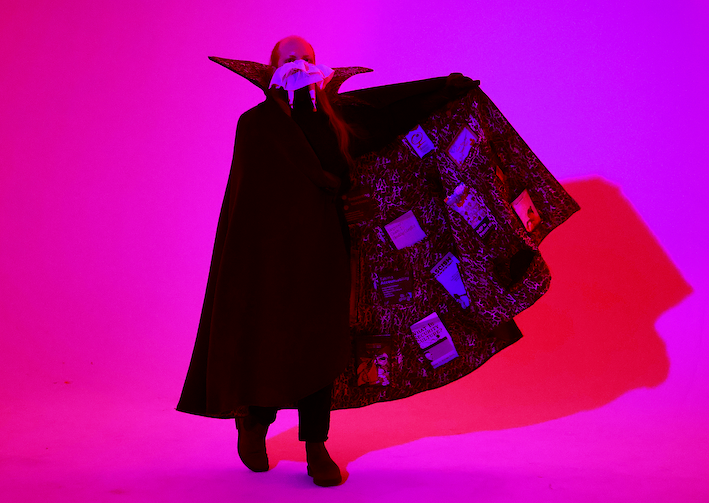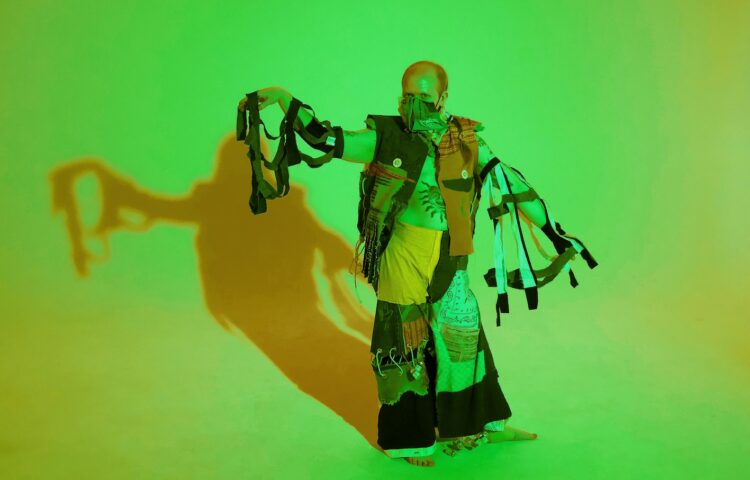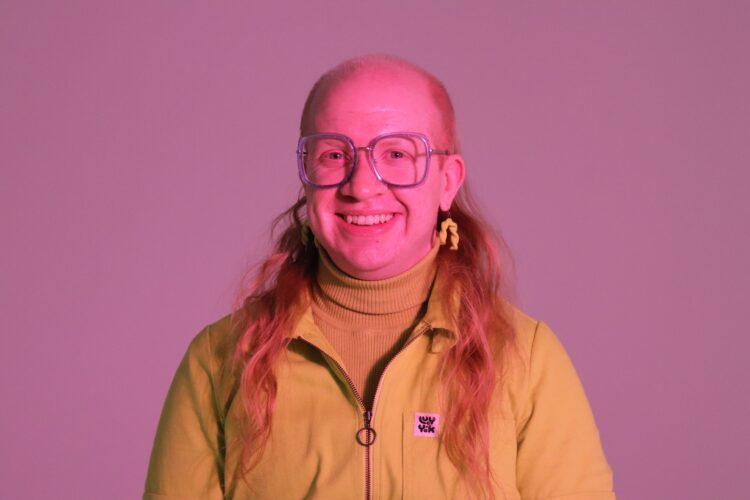
Truly Deeply Madly
Max Quilliam
September, 2024
Visual artist encourages the need for community connection.
St. Albert-based artist Max Quilliam connects art with advocacy, a point succinctly made in 2019 as a leader of an art-centred protest over the lack of publicly-accessible gender-neutral washroom facilities in Allard Hall at Edmonton’s MacEwan University.
Quilliam, who is queer, trans, and disabled, created a series of figures resembling the stick people found on bathroom signs, and included testimonies from community members about the importance of gender-neutral facilities. The figures were placed outside Allard Hall’s washrooms, so that people had to pass them on their way to answer nature’s call.
–

–
What was highlighted through the work is that while trans and gender non-conforming people benefit from gender neutral bathrooms, so do parents, disabled people, those with social anxiety… the list goes on.
says Quilliam, known for creating art that explores ideas and themes around community and care, including disability rights and health matters affecting queer and trans people.
“This whole situation highlights why I find visual art to be such an important platform for activism. Not only did this work allow me to bring many people’s voices forward to a public audience for further engagement, but it allowed me to bolster the work that previous activists had already been doing up to that point.”
Allard Hall now has a set of gender-neutral washrooms, likely in part due to Quilliam’s efforts. Pivotal protest notwithstanding, MacEwan University is now the artist’s alma mater, courtesy of a BFA from the institution’s studio arts program.
My time in that program is what sparked and fostered my interest in arts-based research, which plays a major role in where my practice is at the moment and where I see it moving in the future.
Quilliam notes.
Quilliam approaches the use of visual art as advocacy from a perspective of accessibility and engagement, believing the medium can provide a point of connection for people who may not be familiar with the issues the artist brings up. “I’m drawn to visual art as a way of opening the door, inviting more people into the conversation and work of advocacy,” Quilliam explains.
A longtime St. Albert resident, Quilliam also spent a lot of time with grandparents during childhood in rural Newfoundland. “I think that living between these places has led me to think a lot about community connections and structures, which is a topic I often explore in my artistic practice,” says the artist. “While there are obviously many differences between St. Albert and Dildo, Nfld., having such a stark contrast has helped to highlight similarities in what brings people together and why. All of this is to say that living in both of these places has given my artistic practice perspective, which I think is useful for any artist!”
Quilliam also credits the city with facilitating artist opportunities for youths, particularly Amplify St. Albert, which provided that push to ultimately apply to art school. “Being able to share my artwork publicly for the first time, and helping other visual artists to do the same in the festival gallery, really highlighted my love for working in and around the arts, and helped me to realize that I did want to keep expanding my artistic practice in one way or another,” adds Quilliam.
That practice was recognized earlier this year when the St. Albert Mayor’s Celebration of the Arts awarded the former student with an emerging artist distinction, something Quilliam says was not only a huge honour, but a real confidence-booster when it comes to facing the future as a post-graduate.
–

–
Quilliam believes that emerging artists, especially those from marginalized sectors, need to “find their community” in order to get ahead. “It may take some time to find, for sure, but being in creative spaces with people who ‘get’ you and your work will do so much to feed your spirit and your artistic practice,” says the artist. “When people around you understand the type of work you’re trying to make, they will be the best guide for how you can improve it and push your ideas further.”
The artist notes that establishing such a connection is essential for artists coming from marginalized communities, given that the art scene wasn’t created with such experiences in the first place. “Having these greater systems not welcome your work can get really disheartening if you don’t have anyone in your corner to cheer you on, which is why I think that having that community connection is important,” says Qulliam.

One doesn’t need to be an artist to take a stand, however. Quilliam encourages others to become advocates as well. “Maybe you make advocacy artwork of your own,” says the artist. “Maybe you attend your first rally. Maybe you have a tough conversation with your family members. It can be as simple as taking the time to email or call a politician to share your concerns. Anything that you can do to push this world towards justice and equity for all is always worth doing.”












